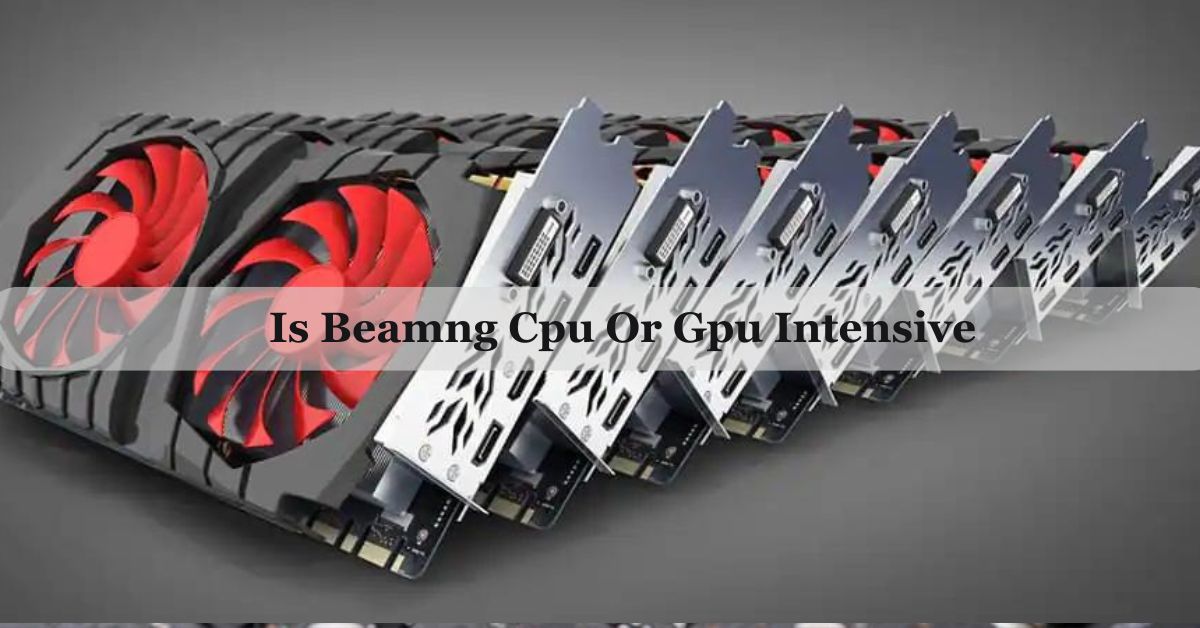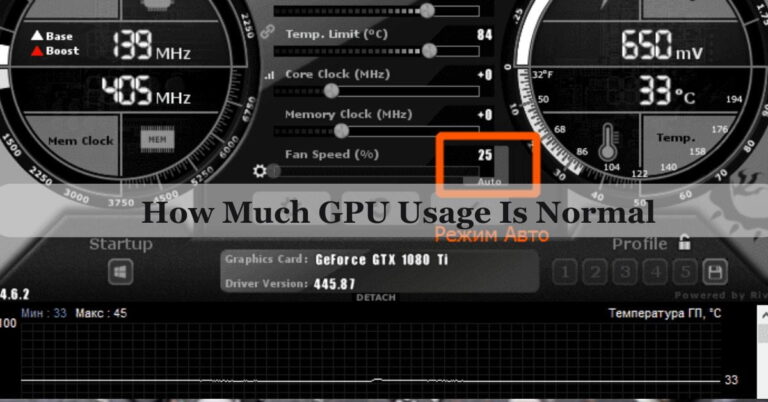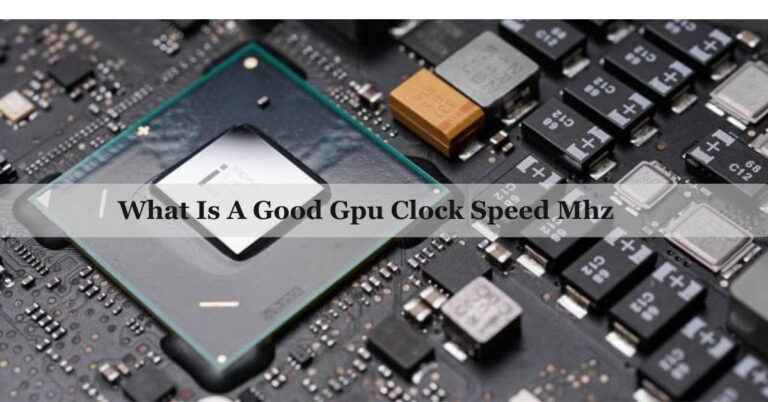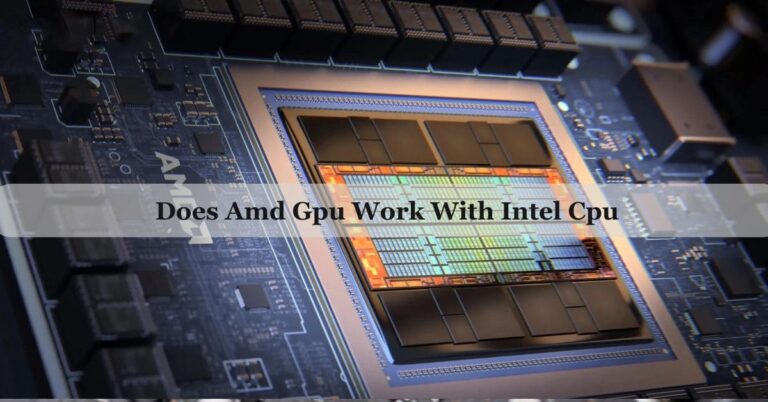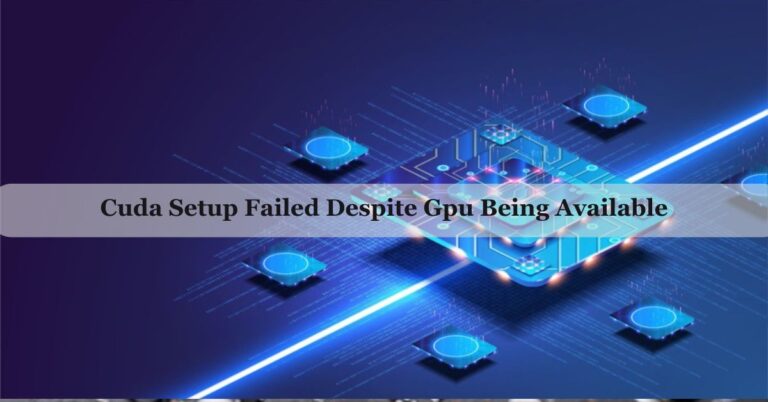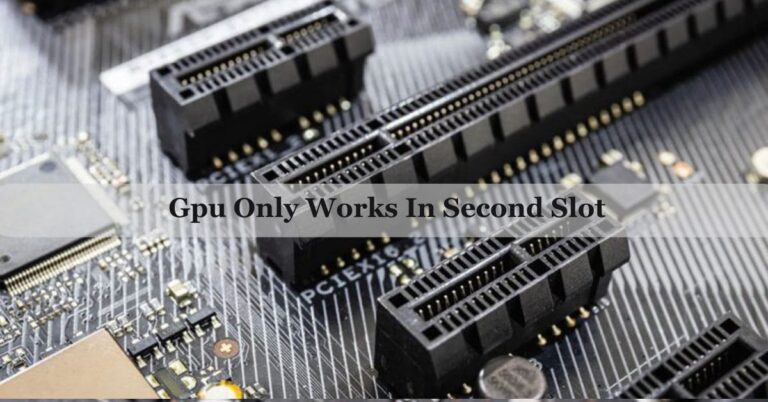Is Beamng Cpu Or Gpu Intensive – Conquer Both!
When I first played BeamNG.drive, I wondered, “Is BeamNG CPU or GPU intensive?” I quickly realized that my old CPU was struggling with the game’s complex physics, so I upgraded to a faster one for a smoother experience.
Is BeamNG CPU or GPU Intensive? And the answer is “BeamNG.drive is primarily CPU intensive due to its complex physics engine and AI calculations. However, a powerful GPU is also needed for high-quality graphics and visual effects. For the best experience, balance both CPU and GPU performance.”
Curious about what makes BeamNG.drive so demanding on your PC? Our detailed guide explains if it’s your CPU or GPU that needs to be top-notch for smooth gameplay. Learn tips and tricks to optimize your setup and enjoy the game to the fullest.
What Is Beamng.Drive?
BeamNG.drive is a driving simulation game that offers a super realistic experience for players who love cars. In this game, you can drive a variety of vehicles in an open-world environment, explore detailed maps, and experience lifelike car crashes and deformations thanks to its advanced physics engine.
You can drive freely, complete different challenges, or just enjoy watching how vehicles react to collisions. Released in 2013 by BeamNG GmbH, it’s known for its attention to detail and realistic driving mechanics, making it a favorite among car enthusiasts and gamers alike.
Beamng.Drive And Cpu Intensity :
BeamNG.drive and CPU Intensity refer to how much work the Central Processing Unit (CPU) has to do to run the game. In BeamNG.drive, the CPU handles complex tasks like simulating realistic car crashes, managing vehicle physics, and running the game’s artificial intelligence.

This means that the CPU has to do a lot of calculations to make the game run smoothly. If your CPU isn’t powerful enough, you might experience lag or slowdowns during intense driving or crash scenarios. So, for the best experience in BeamNG.drive, you need a strong CPU that can handle these demanding calculations.
Factors Contributing to GPU Intensity in BeamNG.drive Include:
High-Quality Textures and Environments:
BeamNG.drive demands a lot from the GPU due to its high-quality textures and environments. Detailed textures from road surfaces to cars range from 1K to 4K resolution, requiring significant GPU power to render clearly and realistically. A powerful GPU ensures these textures look great in the game.
Realistic Lighting and Shadows:
The game’s realistic lighting and shadows add to GPU intensity. Advanced lighting effects, such as sunlight casting shadows and light reflections, require substantial GPU processing to appear natural and believable. Good lighting enhances visual appeal but needs a strong GPU.
Visual Effects During Crashes and Deformations:
BeamNG.drive’s realistic car crashes, with detailed bending and crumpling, also demand GPU power. The GPU processes these effects to make crashes look real, calculating car deformations and damage. High-speed collisions need a powerful GPU for visually convincing results.
Post-Processing Effects:
Post-processing effects like motion blur and depth of field add GPU demand in BeamNG.drive. These effects, applied after the initial image is created, enhance visual polish but require additional GPU power to execute smoothly.
Dynamic Weather and Environmental Changes:
Dynamic weather and environmental changes in BeamNG.drive, such as rain, fog, and changing daylight, increase GPU intensity. The GPU must render these conditions in real-time, requiring significant power to maintain visual quality regardless of weather changes.
What Does Gpu Intensive Mean?
GPU intensive means that a task or application requires a lot of processing power from the Graphics Processing Unit (GPU) to run smoothly.
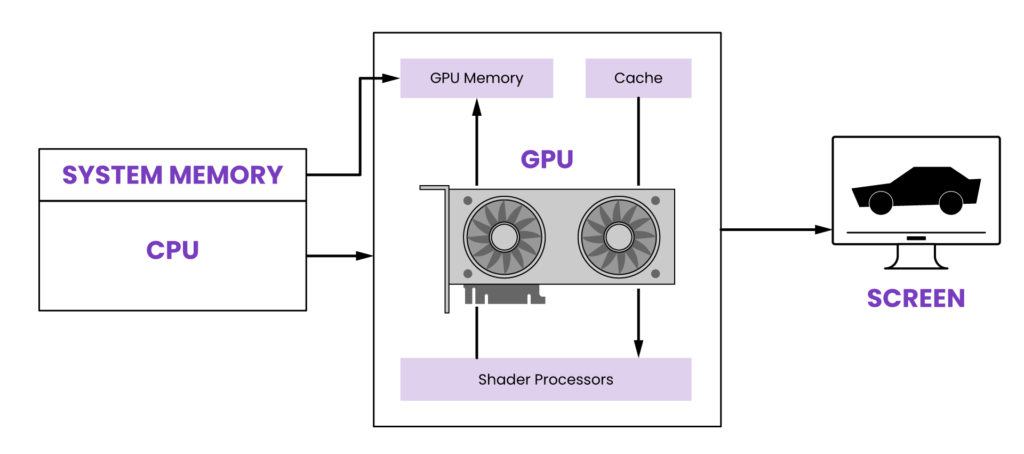
This typically involves handling complex graphical tasks such as rendering high-resolution textures, processing advanced lighting and shadows, and managing visual effects.
When a game or application is GPU intensive, it relies heavily on the GPU to deliver high-quality visuals and maintain performance.
How To Optimize For Gpu?
- Upgrade Your GPU: Invest in a powerful graphics card with sufficient VRAM (Video RAM) to handle high-resolution textures and complex scenes. A GPU with 6GB to 8GB of VRAM is often recommended for modern games.
- Update GPU Drivers: Regularly update your GPU drivers from the manufacturer’s website (NVIDIA, AMD, etc.) to ensure you have the latest performance improvements and bug fixes.
- Adjust In-Game Graphics Settings: Lower settings such as texture quality, shadows, and post-processing effects to reduce the GPU load. Find a balance between visual quality and performance by experimenting with different settings.
- Monitor GPU Temperature and Usage: Use monitoring tools to keep an eye on GPU temperature and usage during gameplay. Aim to keep temperatures within the manufacturer’s recommended range to prevent overheating and potential damage.
- Overclocking (with Caution): Consider overclocking your GPU to boost its performance, but be cautious and ensure your cooling system can handle the increased heat. Only overclock within safe limits to avoid damaging your hardware.
- Optimize Windows Power Settings: Set your power plan to “High Performance” in Windows settings to ensure the GPU operates at its maximum capacity during gaming sessions.
- Use Game-Specific Optimization Tools: Some games come with built-in optimization tools or recommended settings for specific GPUs. Use these tools to automatically adjust settings for optimal performance.
- Enable Hardware-Accelerated GPU Scheduling: In Windows 10 and 11, enable hardware-accelerated GPU scheduling in the system settings to improve GPU performance and reduce latency.
- Use DirectX 11 or 12: Depending on your GPU’s capabilities, choose the appropriate DirectX version in the game settings. DirectX 12 can offer performance improvements for compatible GPUs.
BeamNG.drive: CPU vs. GPU in Action
To illustrate how BeamNG.drive uses the CPU and GPU, let’s look at some in-game scenarios:
Driving in a Busy City:
- CPU: Handles the simulation of traffic AI, physics calculations for multiple vehicles, and environmental interactions.
- GPU: Renders city textures, lighting effects, and real-time shadows for a bustling urban environment.
Performing a High-Speed Crash Test:
- CPU: Manages the complex calculations for vehicle deformations and crash physics.
- GPU: Renders the crash effects, including damage to vehicles and debris.
Exploring a New Map:
- CPU: Handles the game’s logic for new areas and interactions.
- GPU: Renders detailed textures, lighting, and environmental effects for the new map.
What Are the Best Hardware Requirements for BeamNG.drive?
For the best experience:
- CPU: A high-performance processor like AMD Ryzen 7 or Intel Core i7.
- GPU: A strong graphics card like NVIDIA GeForce RTX 3060 or AMD Radeon RX 6700 XT.
- VRAM: 6GB to 8GB of VRAM for smooth performance.
- DirectX: Test both DirectX 11 and 12 to see which works better for your setup.
Why Is Beamng.Drive Gpu Intensive?
BeamNG.drive is GPU becauintensive se it uses detailed textures, realistic lighting and shadows, and advanced visual effects for crashes and deformations. The game also includes dynamic weather and environmental changes, all of which require significant processing power from the GPU to render accurately. This high demand on graphics processing ensures the game looks realistic and runs smoothly.
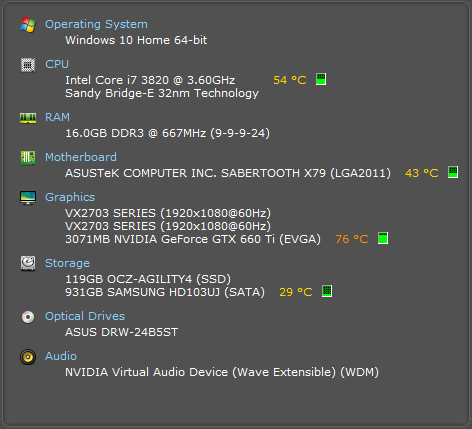
Why Is Beamng.Drive Cpu Intensive?
BeamNG.drive is CPU intensive because it relies heavily on the CPU to simulate complex vehicle physics, detailed car crashes, and realistic deformations in real-time. These tasks require a lot of processing power for accurate and lifelike calculations. Therefore, a strong CPU is essential for smooth gameplay.
Is Beamng Cpu Or Gpu Intensive When Playing At 4k Resolution?
When playing BeamNG.drive at 4K resolution, the game becomes more GPU intensive. This is because higher resolutions like 4K require the GPU to work harder to render detailed graphics, high-quality textures, and complex visual effects.
While the CPU still handles physics and simulations, the GPU takes on the larger load for 4K visuals. So, for the best experience at 4K, you need a powerful GPU to handle the increased graphical demands.
FAQs:
1. Is Beamng.Drive Cpu Or Gpu Intensive?
BeamNG.drive is more CPU intensive because it relies heavily on the CPU to simulate detailed vehicle physics and crashes. However, a good GPU is also important for rendering high-quality graphics and visual effects.
2. Should You Use Directx 11 Or 12 For Beamng.Drive?
You should use DirectX 12 for BeamNG.drive if your GPU supports it, as it can offer better performance and efficiency. However, if your GPU is older, DirectX 11 might be more stable and compatible.
3. Is Beamng Cpu Or Gpu Intensive On Low Settings?
Even on low settings, BeamNG.drive is still more CPU intensive due to its complex vehicle physics and calculations. The GPU handles fewer details, but the CPU remains the main performer for the game’s physics.
4. How Much Vram Is Recommended For Beamng.Drive?
For BeamNG.drive, 6GB to 8GB of VRAM is recommended for smooth gameplay. This amount of VRAM helps handle high-resolution textures and complex visual effects.
5. Is Beamng Cpu Or Gpu Intensive Compared To Other Racing Games?
BeamNG.drive is more CPU intensive than most other racing games because it focuses on detailed car physics and realistic crashes. While it still needs a good GPU, the CPU handles the complex simulations that set it apart from other racing games.
6. Why Do You Need A Multicore Processor For Beamng.Drive?
You need a multicore processor for BeamNG.drive because the game uses multiple CPU cores to handle complex physics simulations and detailed car crashes. More cores allow the game to run smoothly by dividing tasks among different processors.
7. Why Multicore Processors For Beamng.Drive?
BeamNG.drive needs multicore processors because it performs many complex calculations at once, like physics simulations and AI, which are split across different cores for better performance. More cores help the game run smoother and handle detailed physics.
8. Is Beamng Cpu Or Gpu Intensive During Multiplayer Gameplay?
Multicore processors are essential for BeamNG.drive because the game uses multiple CPU cores to handle complex tasks like vehicle physics and AI. More cores help the game run smoothly by managing these demanding processes simultaneously.
9. Why multicore processors for BeamNG.drive?
Multicore processors are important for BeamNG.drive because they handle the game’s complex physics calculations and simulations more effectively. More CPU cores help manage multiple tasks at once, improving overall game performance and stability.
10. Is Beamng Cpu Or Gpu Intensive For Running Mods?
BeamNG.drive can be both CPU and GPU intensive for running mods. Mods that add new vehicles, environments, or features can increase the load on both the CPU for physics calculations and the GPU for rendering details.
Final Thoughts:
In conclusion, when asking “Is BeamNG CPU or GPU intensive,” the answer is that it is mainly CPU intensive. The game relies heavily on the CPU for complex physics and simulations, but a good GPU is also needed for high-quality graphics and smooth performance.

James George is a GPU expert with 5 years of experience in GPU repair. On Techy Cores, he shares practical tips, guides, and troubleshooting advice to help you keep your GPU in top shape. Whether you’re a beginner or a seasoned tech enthusiast, James’s expertise will help you understand and fix your GPU issues easily.

